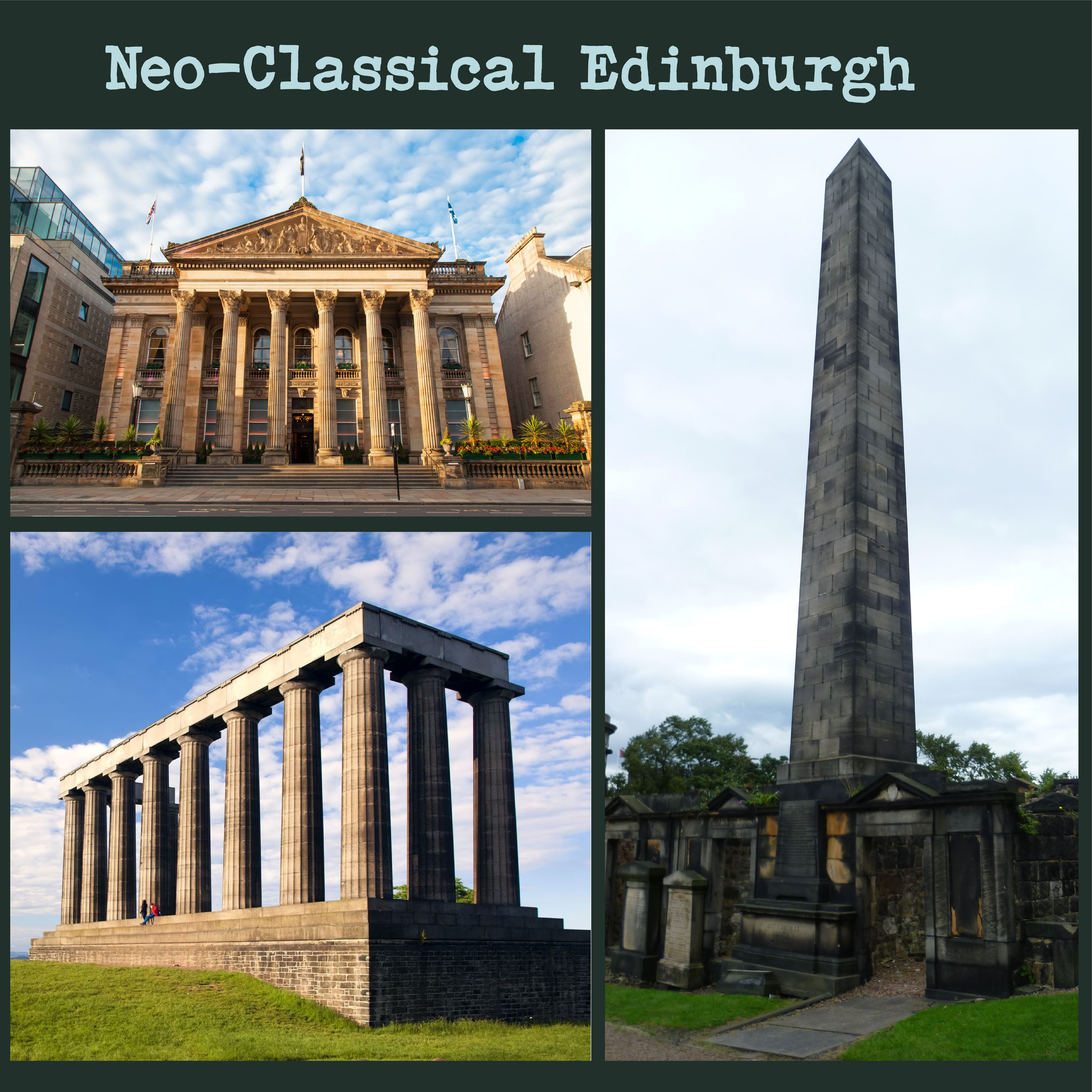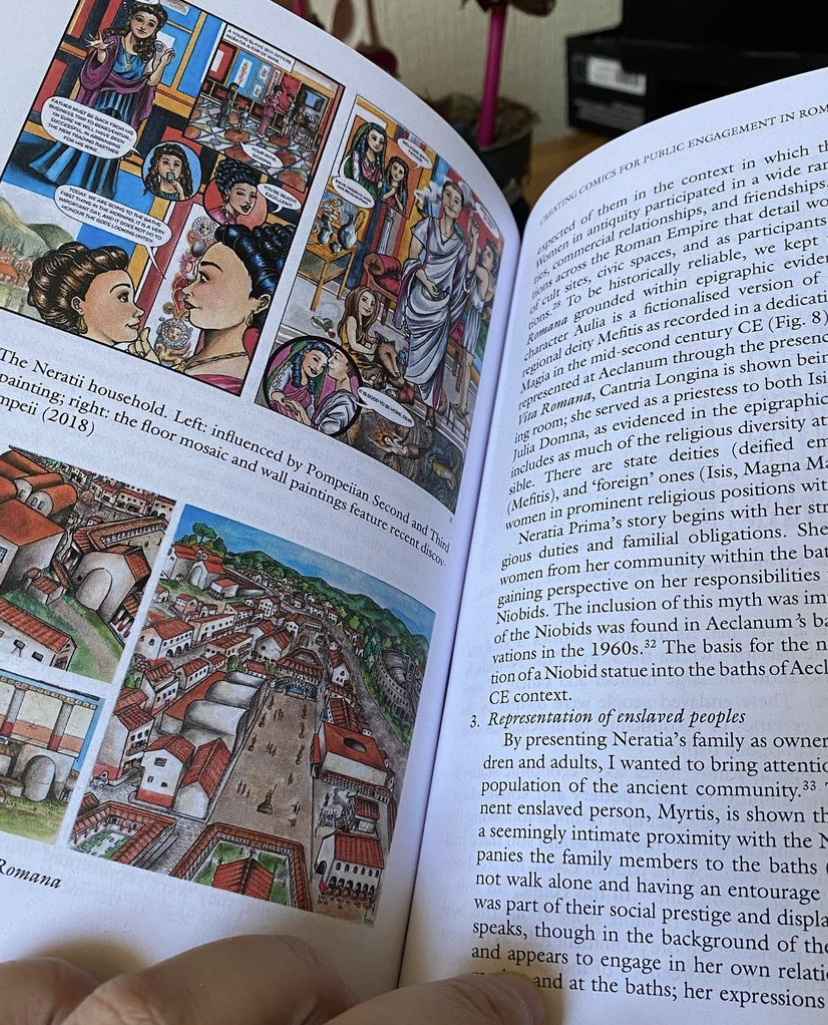In this week’s episode, Two Friends Talk History flips the script and I am interviewed by returning guest and expert on sex and gender in antiquity, Dr Briana King. This episode will be part one of an ongoing look at Classical Reception; a field of study that looks at how the ancient world is used in different media today. Our first conversation lays down the foundational context for understanding what it means when classical images and stories are incorporated into modern media through books, music, film and more!
I explore the history of the transmission of the ‘Classical Past’ into the Renaissance and Enlightenment periods, with a special focus on Neo-Classical Edinburgh and its architectural legacy of appropriating the past to project a colonial future of the British Empire.

Classical Reception P.1 with Briana King – Two Friends Talk History
What is Classical Reception?
The field of Classical Reception Studies examines the reception of classical Greco-Roman antiquity by later cultures, especially the post-classical ‘West’. This can involve “texts, images, objects, ideas, institutions, monuments, architecture, cultural artifacts, rituals, practices, and sayings.” (Grafton (2010), vii-viii). Lorna Hardwick, who has many publications on this topic, defines it as “the ways in which Greek and Roman material has been transmitted, translated, excerpted, interpreted, rewritten, re-imaged and represented”. This can encompass everything from the next season of the Blood of Zeus anime coming back to Netflix, a new Percy Jackson series coming soon on Disney+, and the upcoming live action remake of Disney’s Hercules.

Latin was part of the elite education in the middle ages, functioning as the language of scholarship and the church. Greek authors and texts were not available readily in the middle ages among scholars in the west, although the texts did remain in collections among the eastern Christian and Islamic centres of learning. The Renaissance involved an increase in the study and dissemination of classical texts in Greek into western Europe due to the collapsing Byzantine Empire, and its inhabitants relocating, reintroducing elite audiences to these Greek texts. In the 14th and 15th (13xx seems a little early, are you sure?) centuries, reconstruction and redevelopment of buildings and land in Rome, and in the surrounding principalities, led to the rediscovery of large numbers of classical sculptures and architectural features that influenced art tastes into the 17th and 18th centuries.
It is within this later phase of the dissemination and appropriation of the ‘classical tradition’ that is most associated with writers, artists, and architects consciously adopting classical models into the mainstream. The wars of the French, English, Portuguese, Spanish, Russians, Ottomans, and Dutch etc were fought to control colonial resources and expanding the home country’s trade interests. At the same time as elements of Humanist philosophies and Enlightenment thinking were circulating these empires, becoming rallying cries for some towards freedom and equality, the trafficking of enslaved people expanded across the contested territories. The virtuous philosophical aims of a shared humankind were reconciled with the barbarity of enslavement by looking to the Classical past to justify their empires, situating themselves within a continuum of conquest, and Empire within the heroic classical past.
Getting a Grand Tour Gap Year
Classical education became emblematic of elite education for the next two hundred years. Thus a “classical education” and defining what the past was and what it meant was only for the wealthy, and reflected their ideas of society, norms and values.
Young British elites were on “Grand Tour” of the Classical world, served as an educational rite of passage among the young men of primarily British elite families. The travels of these young elites to Italy, Greece, France and Germany brought them in contact with classical art which “completed their education as English gentlemen” according to an 18th century historian Edward Gibbon.


The Neoclassical art movement coincided with the renewed emphasis on classical education the 18th century’s Age of Enlightenment, and was represented in the visual arts, theatre, architecture and decorative arts. This movement was also fuelled importantly by the excavations of Pompeii and Herculaneum. Elite collectors could go on their grand tours, observe excavations and purchase pieces of the ancient past. Once they returned home, they could have their homes decorated in the lasted fashions inspired by the frescos and stuccos being excavated. The principles of symmetry and simplicity within the arts aligned well with the precision of scientific rationality espoused by Enlightenment thinking.



In our next special dive into Classical Reception Studies, Dr King and I will look at the darker side of Classical Reception in a NSFW discussion about how the classical world is used in TV and film to depict acts of violence and sexual brutality. This episode may not be appropriate for younger listeners so listener discretion is advised.
Classics and Comics
At the end of this episode, we discuss the exciting work being done with comics to engage with the ancient world. I will be giving a paper at a conference on Classics and Comics, graciously hosted by Universidad Autónoma de Barcelona (UAB), this October. I am really looking forward to hearing about the work in this field of Classical Reception Studies going on, particularly as it relates to comics! I am also looking forward to sharing my work for this conference with listeners soon.
Now, as for my shameless self-promotion, here is a link to my publication on comics and classical archaeology discussed in the episode. My chapter in the Palgrave Macmillan volume, Comics, and Archaeology: https://link.springer.com/chapter/10.1007/978-3-030-98919-4_5



Click HERE download Vita Romana, or activity materials.
I am currently working on Chapter 1 of Ritualia, “Dancing with Dionysos”. Stay tuned for work in progress on Ritualia here on my website, and to view the introduction, check out my Webtoon Comic here!

To follow the spectacular Dr King’s academic work, check out her page on Academia.edu.
Suggested Readings
Grafton, Anthony., Glenn W. Most, and Salvatore, Settis (eds.), (2010). The Classical Tradition. Cambridge, Mass: Harvard University Press.
Beard, Mary; Henderson, John (2000). Classics: A Very Short Introduction. Oxford: Oxford University Press.
Kallendorf, Craig W. (2007). “Introduction”. In Kallendorf, Craig W. (ed.). A Companion to the Classical Tradition. Massachusetts: Blackwell.
Kaminski, Thomas (2007). “Neoclassicism”. In Kallendorf, Craig W. (ed.). A Companion to the Classical Tradition. Massachusetts: Blackwell.
Stray, C., and Hardwick, L. (2008). Companion to Classical Receptions. Hoboken: Wiley.
Kovacs, & Marshall, C. W. (2016). Son of classics and comics / edited by George Kovacs and C.W. Marshall. (Kovacs & C. W. Marshall, Eds.). Oxford University Press.
Kovacs, & Marshall, C. W. (2011). Classics and comics / edited by George Kovacs and C.W. Marshall. Oxford University Press.
Platt, V. J. (2011). Facing the gods: epiphany and representation in Graeco-Roman art, literature and religion. Cambridge University Press.
Smythe, R. (2021-2023). Lore Olympus: Vol 1-3. Del Rey Publishing: London.

